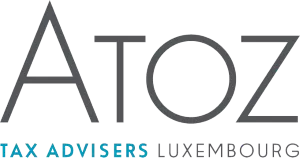- in Asia
- with readers working within the Retail & Leisure industries
- in Asia
- within Technology and Finance and Banking topic(s)
- with readers working within the Pharmaceuticals & BioTech industries
On 19 December 2024, the Luxembourg Parliament passed a law (the “Amending Law”) which amends the law of 22 December 2023 (the “Pillar Two Law”) implementing the EU Directive of 15 December 2022 on ensuring a global minimum level of taxation for multinational enterprise (“MNE”) groups and large-scale domestic groups in the Union (known as the “Pillar Two Directive”).
The Amending Law incorporates clarifications, interpretations and additional technical provisions resulting from three sets of administrative guidance published by the OECD/G20 Inclusive Framework on Base Erosion Profit Shifting in 2023 and a fourth set of administrative guidance to assist MNEs in navigating the Global Anti-Base Erosion (“GloBE”) rules published by the OECD on 17 June 2024 (referred together as the “Agreed Administrative Guidance”).
The amendments to the Pillar Two Law deal with a multitude of aspects of the minimum taxation rules, including clarifications, among others, on the scope of application of the rules (excluded entities, turnover definition, etc.) and on how to deal in practice with several issues, such as mismatches in accounting and tax periods within the group, as well as on specific issues related to the computation of the income and loss, the top-up tax and the domestic top-up tax (e.g. functional currency to apply).
Several clarifications are also included on the transitional rules, including the country-by-country reporting safe harbour and the deferred tax assets and liabilities, as well as on administrative/filing obligations.
The Amending Law finally outlines how to allocate current and deferred taxes across different jurisdictions and addresses flow-through entities, ensuring a more stable tax outcome for securitization entities under a jurisdiction's minimum top-up tax.
We describe some of the main clarifications for Luxembourg funds hereafter.
Background and purpose of the Amending Law
The Pillar Two Law establishes a minimum effective tax rate of 15% for MNE or large-scale domestic groups with a combined annual turnover equal to or above EUR 750 million in at least two of the four fiscal years preceding the tested fiscal year, as per the consolidated financial statements of the group parent entity. This law, along with the Pillar Two Directive, is founded on the Inclusive Framework agreement on GloBE rules that provide for a co-ordinated system of taxation intended to ensure large MNE groups pay a minimum level of tax on the income arising in each of the jurisdictions where they operate (the “Model Rules”), published in December 2021. In 2023 and in June 2024, Agreed Administrative Guidance on the Model Rules was published by the Inclusive Framework to further clarify and expand upon various aspects of these rules.
As the GloBE Model Rules require explicitly that the Pillar Two rules be applied in accordance with the Agreed Administrative Guidance, the purpose of the Amending Law is to ensure compliance of the Luxembourg Pillar Two Law with OECD guidance to the extent the Luxembourg legislator was not able to explicitly take into account all aspects of the guidance at the time of the Pillar Two Law's adoption.
Clarifications dealing with the scope of application and definitions
Excluded entities - Investment funds and real estate investment vehicles
The Pillar Two Law applies to “constituent entities” located in Luxembourg belonging to MNE or large-scale domestic groups with a combined annual turnover equal to or above EUR 750 million, as per the consolidated financial statements of the group parent entity.
A “constituent entity” as defined by the Pillar Two Law means an entity or permanent establishment that is part of an MNE group or a large-scale domestic group. A “group” is defined as a group of entities linked by virtue of their ownership or control structure and included in the consolidated financial statements of the ultimate parent entity (also extending to entities that are excluded from consolidation based on size, materiality or on the grounds that the entity is held for sale). A group could also be a main entity and one or more permanent establishments, provided that such group is not part of another group based on the above consolidation threshold.
Entities that do not prepare consolidated accounts on a line-by-line basis may nevertheless be considered to form a group with their subsidiaries and therefore be in the scope of Pillar Two (e.g. if they are not required to prepare accounts at all or they do not prepare accounts under an acceptable accounting standard) based on the “deemed consolidation test”.
The Agreed Administrative Guidance already clarified that certain investment entities (e.g. under IFRS 10) that are exempt from line-by-line consolidation and that are merely required to fair value their investments (including where majority stakes are held in subsidiary companies) do not fall within the deemed consolidation rule, i.e. such entities do not qualify as parent entities of a group.
The Pillar Two Law and the related parliamentary documents unfortunately remained silent on this particular topic.
The commentaries on the Amending Law now point out that the "deemed consolidation test” does not change the rules that apply under the applicable financial accounting standard. The purpose of this test is to determine whether a consolidated group would have existed if the application of the qualifying financial accounting standard (or another financial accounting standard) had been mandatory. If an entity, such as an investment entity, is not required to consolidate on a line-by-line basis under the qualifying financial accounting standard that is, or would be, applicable to it, then the "deemed consolidation" rule does in principle not require line-by-line consolidation. In addition, certain laws applicable to investment funds may contain legal exemptions from the obligation to consolidate companies held as investments, so that entities benefiting from such exemptions can generally not be considered to meet the "deemed consolidation" test.
The definition of "controlling interest" is based on the same approach: the "deemed consolidation test” does not treat a person as having a controlling interest in an entity if the applicable accounting standard does not require that person to consolidate the entity in question on a line-by-line basis. Similarly, an entity that carries out line by-line consolidation on a voluntarily basis or under contract cannot, on that basis alone, be considered to have a "controlling interest" in entities subject to such voluntary consolidation, to the extent that this concept refers to an obligation under a qualifying financial accounting standard under which the holder of the interest is or would have been required to carry out a line-by-line consolidation of the entity held.
The commentaries thus confirm that Luxembourg-specific exemptions from consolidation for most investment funds based on the respective special laws such as for reserved alternative investment funds (“RAIF”), specialized investment funds (“SIF”) or companies in risk capital (“SICAR”) are consolidation exemptions comparable to the IFRS 10 investment entity exception. This clarification provides legal certainty for Luxembourg investment fund vehicles concerned.
The Amending Law also clarifies that an investment fund or real estate investment vehicle, which is not an ultimate parent entity for the sole reason that it is not required to prepare consolidated financial statements under the qualifying financial accounting standard or an accepted financial accounting standard, is to be assimilated to an excluded entity. This provision is intended to clarify that entities held by such investment fund or real estate investment vehicles in the sense of Pillar Two are to be considered as excluded entities for the purposes of the Pillar Two Law. However, such entities still have to be taken into account for verifying whether the EUR 750 million group's annual turnover threshold is met.
Scope of application - Concept of turnover
To avoid divergent results based on the different financial accounting standards that may apply, the Amending Law standardises the concept of “turnover” for the purposes of applying the EUR 750 million threshold referred to in the Pillar Two Law. Based on the Amending Law, the turnover has to be determined on the basis of the amount reflected in the profit and loss account of the group's consolidated financial statements and includes (i) income arising from the supply or production of goods, the provision of services or other activities which constitute the ordinary activities of the MNE group or large national group, before deduction of operating expenses, (ii) net realised or unrealised gains on investments, and (iii) income or gains presented separately as extraordinary or non-recurring income.
Computation of income and loss - Technical provisions of insurance companies
To avoid situations of deduction without inclusion, the Amending Law aligns the treatment of an insurance company's technical provisions with the treatment of excluded dividends and excluded capital gains or losses which these technical provisions relate to from an economic point of view. This means that these technical provisions, which have their origin in investments made by the insurance company on behalf of policyholders, are not allowed as expenses in the calculation of the insurance company's allowable profit or loss.
Flow-through entities
The Amending Law implements part of the June 2024 Agreed administrative Guidance in respect to the notion of “owner” when a Flow-through Entity is held directly by another Flow-through Entity. In accordance with the June 2024 Agreed Administrative Guidance, the Amending Law introduces provisions to determine whether a Flow-through Entity is classified as a Tax Transparent Entity or a Reverse Hybrid Entity based on how the Flowthrough Entity is treated in the “jurisdiction in which the owner is located”.
The “jurisdiction in which the owner is located” refers to the jurisdiction of the direct owner of the Flow-through Entity. Accordingly, the difference between a Tax Transparent Entity and a Reverse Hybrid Entity depends on whether the domestic tax law of the jurisdiction of the direct owner treats the Entity as fiscally transparent. This determination is made with respect to each Ownership Interest so a Flow-through Entity can be both a Tax Transparent Entity and a Reverse Hybrid Entity where it has multiple owners.
The Amending Law also introduces specific provisions for the allocation of Income/Loss of a Flow-through Entity to owners that are not Group Entities and whose Ownership Interests in the Flow-through Entity are owned directly or indirectly through a Tax Transparent Structure. This ensures that the MNE Group does not pay top-up tax on income that it is not entitled to and on which no Constituent Entity is subject to tax.
Securitisation Entity
The June 2024 Agreed Administrative Guidance confirms that jurisdictions that have implemented a qualified domestic top-up tax (“QDMTT”), as Luxembourg, are not required to impose top-up tax liabilities on SPVs used in securitisation transactions. For that purpose, the June 2024 Agreed Administrative Guidance clarifies notably that a QDMTT liability in respect of a Securitisation Entity should generally be imposed on other Constituent Entities located in the jurisdiction and that a QDMTT may exclude a Securitisation Entity from its scope (such that the Securitisation Entity is not treated as a Constituent Entity for the purposes of that QDMTT).
The Amending Law does not exclude a Securitisation Entity from the scope of the Luxembourg QDMTT, but it ensures that a Securitisation Entity that is a ‘constituent entity' of MNE group cannot be designated as such an top tier Luxembourg constituent entity for the purposes of the QDMTT and provides that, the potential top-up tax calculated for a Securitisation Entity is in principle allocated to other Luxembourg constituent entities of the group. However, in the absence of other Luxembourg constituent entities of the group, the Luxembourg QDMTT that has been determined for a Securitisation Entity is levied on that entity. Additionally, Securitisation Entity are exempt from the joint and several liability mechanisms.
This choice allows Luxembourg to maintain the benefits of the QDMTT safe harbour according to which other jurisdictions with Pillar Two rules are generally not expected to apply IIR or UTPR provisions to Luxembourg entities subject to Luxembourg QDMTT rules.
Next steps
On 20 December, the Council of State granted the Amending Law dispensation from the second constitutional vote. The Amending law should thus be promulgated and published in the coming days.
Amendments introduced by the Amending Law are mainly intended to clarify provisions so as to guide taxpayers on how to interpret and apply rules which are already in force (i.e. the rules of the Pillar Two Law) and should not, as such, introduce changes to the rules themselves. As a result, the entry into force provisions of the Amending Law is aligned to those of the Pillar Two Law and provide that the new provisions would apply to tax years starting on or after 31 December 2023.
We will keep you informed of any further developments in the legislative process in Luxembourg.
The content of this article is intended to provide a general guide to the subject matter. Specialist advice should be sought about your specific circumstances.
[View Source]


